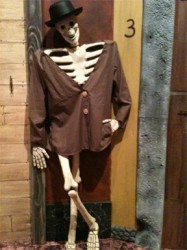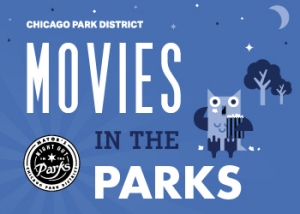By: Daisy Magaña
 Culture is the food we savorly eat, the music we passionately listen to, the dance we rhythmically move our feet and shake our hips with, even the fashion we curiously explore. It exists all around us; it is the air we breathe. Culture acts as a bridge connecting each and every individual in one way or another. It is the roots to which we stay connected with our ancestors and pay homage. El Dia de Los Muertos is a Mexican holiday honoring the beloved friends and family that have passed away through ofrendas (offerings) and altares (altars).
Culture is the food we savorly eat, the music we passionately listen to, the dance we rhythmically move our feet and shake our hips with, even the fashion we curiously explore. It exists all around us; it is the air we breathe. Culture acts as a bridge connecting each and every individual in one way or another. It is the roots to which we stay connected with our ancestors and pay homage. El Dia de Los Muertos is a Mexican holiday honoring the beloved friends and family that have passed away through ofrendas (offerings) and altares (altars).
The National Museum of Mexican Art, located 1852 W. 19th Street, is the largest Latino cultural organization in the United States and the only Latino museum accredited by the American Association of Museums. This year’s exhibition is curated by Dolores Mendoza and dedicated to Chicago artist Francisco G. Mendoza. Each year, the museum chooses a theme in which to explore the Mexican holiday, and this year’s exhibition focuses on the way in which the Yucatan Peninsula carries out this tradition known as “Hanal Pixán” in Mayan. “November 1st is the day in which the offerings are placed, and on November 2nd you go to the cemetery to clean the tombstone, place the flowers, and pray and sing to the deceased,” said Dolores Mendoza, “On these days, the deceased return to their loved ones to enjoy the food’s essence and the presence of loved ones.” Mendoza also acknowledges the holiday’s growing presence in society including our schools of which some teachers have started creating their own altares in the classroom. She encourages all members from the communities to visit the exhibition or sign-up for the many workshops or classes they offer to learn about one of the most important Mexican celebrations.
DePaul University is one of the many educational institutions in which its student body promotes and celebrates El Dia de Los Muertos. Natalia Hernandez, 21, of Portage Park is a member and the event coordinator of DePaul’s D.A.L.E., which stands for DePaul Alliance for Latino Empowerment, since she was a sophomore. Growing up half-Polish, Hernandez mostly identified with her Polish ancestry, and it was not until she attended DePaul that she sought out different ways to explore her Mexican culture. She has quickly learned the importance this cultural celebration holds in the Mexican community and has helped line-up a week’s full of events revolving around El Dia de Los Muertos. “This is a defining tradition for our culture. Even if it might be misrepresented in the “mainstream,” said Hernandez, “[we] commemorate the holiday with as much respect and information as we can here on campus.”
The week leading up to El Dia de Los Muertos will include a “Day of the Dead Bake Sale” and a screening of Lost in Detention, a documentary directed by Maria Hinojosa. The week is aimed at exploring the Mexican culture through an important holiday while diving into other important Latino aspects such as the importance of the Latino vote in today’s politics.
“The tradition of El Dia de Los Muertos was never celebrated in my family as I was growing up,” said Cristina Benitez, Director of Latino Media and Communication at DePaul University. However that did not stop her curiosity, and she slowly started learning about this cultural tradition around the same time the Hispanic population was experiencing a boom in significant numbers. Her husband and she have added the Mexican tradition to their own family customs alongside their Puerto Rican and Swedish backgrounds. El Dia de Los Muertos has become widely celebrated beyond the Mexican community. “Today, our lives aren’t lived in isolation; rather we are sharing a globalized neighborhood,” said Benitez, “As such we have become more open to other cultures, languages and the stunning combination of races and beliefs.” Benitez highly recommends visiting the exhibit at the National Museum of Mexican Art in Pilsen which has highlighted the holiday for the past 26 years.
Pilsen, home to one of the largest Mexican communities in Chicago, has hosted Carrera de Los Muertos since 2007. The neighborhood has welcomed runners of all ethnic backgrounds to partake in this Mexican cultural celebration. Several years later, and the race continues to grow expecting to receive over 4,000 participants in this year’s 5k. “We incorporate the holiday and culture in many different ways,” said Carlos Jaramillo, United Neighborhood Organization (UNO) executive race director. “This year, as our young runners (kids) cross the finish line, we will be providing them with mini sugar skulls as a way to say congratulations. It serves as an opportunity to teach them about the tradition.” Runners and supporters can expect to hear a mix of traditional folkloric music blasting through this culturally rich neighborhood paying homage to the Mexican heritage of celebrating life.
A simple way Latinos and non-Latinos can partake in this important Mexican celebration is by building your own personal altar like Yolanda Herrera, 53, Westmont resident has done so since came to the United States. She describes partaking in this celebration with her grandmother, who would take her and her younger sisters to help clean the tombstones and gather flowers to place at the grave. “I was born with this tradition,” said Herrera, “I wasn’t just an observer but an active participant. When someone loses a loved one, it becomes necessary to remember them.” Each year, she creates an altar with the basic items any altar must have: photos of the deceased, candles to guide their path, water to hydrate them on their journey into this world, incense to transport prayers, salt in a small dish, and the favorite food and drink of the deceased.
Traditionally, these altars and offerings are seen at the person’s tombstone. El Dia de Los Muertos has gained attention from varying organizations, institutions, and groups within society. Whether it is attending a local exhibition, witnessing a student body embrace Mexican tradition, painting your face and partaking in a race, or adorning one’s house with the typical papel picado, veladoras, calaberas, and Catrinas, there are many ways to embrace and learn about this ever-growing Mexican holiday.
For more information regarding the exhibition at The Mexican Museum of Art, please visit: http://www.nationalmuseumofmexicanart.org
For more information about D.A.L.E.’s week of events, please visit https://www.facebook.com/events/479880205385999/












